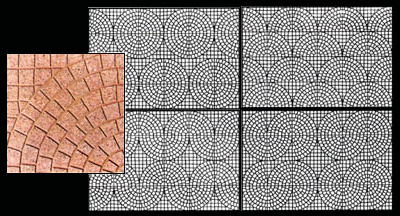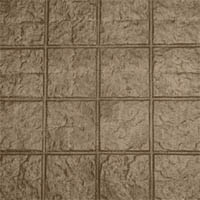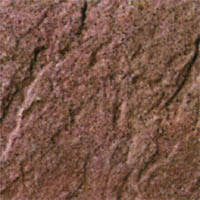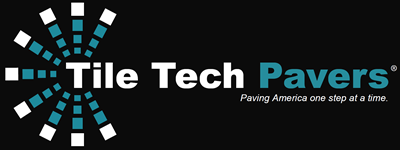Paver Shapes

Paver shapes can create engaging patterns and designs that no other paving material can match. The color, shape, pattern, and visual texture of pavers add charm, vitality, and ambiance to any landscape setting.
With all the shapes available in the marketplace today you are sure to find the perfect paver for your project.
Manufacturers offer a multitude of shapes that can be combined, from simple patterns to intricate patterns.
You can create your own unique design by mixing and matching different shapes and colors. Some shapes and their patterns are of larger dimensions and they need a larger area to show their beauty. If you have a combination of larger and smaller areas, combining different shapes will be easy. Keep in mind that you should use color combinations for a pleasing effect.
Design Shapes of Concrete Pavers
On choosing the concrete paver shapes to use, it must be done in a careful and precise manner, as each type will be a crucial factor in the performance and quality of a concrete block pavement. Some of the concrete paver shapes to choose from are: fully interlocking on both axes, interlocking on only one axis, and non-dentate (basic square and rectangular shapes).
How to attain each concrete paver shape and design? By using timber edging, also known as formwork, which is needed to contain the soft surface material when making a concrete path or drive. This can be removed once the concrete has hardened. You can use old timber such as fence boards or floorboards for these. However, if you choose the timber edging to be permanent, it should be well soaked with wood preservative – preferably use wood pre-treated with vacuum pressure impregnation before purchase. Then carve it out in the concrete paver shapes of your choice. How will you do this? Dig a strip about 150 mm wide along each side of the sub-base surface. The strip should be as deep as the surface layer. Stand a timber length on its side along one side of the sub-base, in line with the string marking line, and drive wooden pegs into the soil to support it from behind. The peg tops should be at the right height above ground for the path or drive surface, and flush with the top of the timber edging. Then use a spirit level to check that the edging strip is laid to the correct lengthways fall, if there is one. Then nail it to the pegs. Butt the other timber lengths in the same way to form one side of the edging.
When making a curve, mark out the shape of the curve on the ground and set up pegs and a string line to follow the curve. Use a saw to make cuts in the timber edging for about half its depth on the edge that will form the inside of the curve. Make cuts at about 125 mm intervals or closer for a sharp curve. Shape the timber by nailing it to the pegs. Check that the timber along each side is at the right height and in the correct slope. Adjust as necessary by tapping it down or levering it up slightly. Choosing the right type among the concrete paver shapes is very important before going ahead and starting to make them, for it to be of the best quality possible.

Shapes of Concrete Pavers
Numerous research and observations demonstrate that paver shapes do contribute largely to the structural performance of a concrete block pavement. Dentated shapes key optimally into each other and, by their plan geometry, interlock and resist the relative movement of joints parallel to both the longitudinal and transverse axes of the unit. Researchers have therefore divided paver shapes into three types:
Many geometric shapes lend themselves to modular paving, but rectangles are the simplest to manufacture, to package and ship to sites and Builders’ supply throughout the land, and so the paving market has been dominated by rectangles literally since the beginning.
The market for block paving has become more sophisticated, so the demand for new, exciting, innovative products has grown, and the leading manufacturers spend a lot of time, effort and money trying to develop innovative paving shapes and patterns to meet the growing demand.

There are a large variety of paver shapes, such as hexagons, pentagons, octagons, parallelograms, fans, keyhole-shapes, X-shapes, W-shapes and more. As mould technology and production techniques continue to evolve, you can be sure that interesting and more wonderful shapes will make their presence upon the paver marketing pathway.
